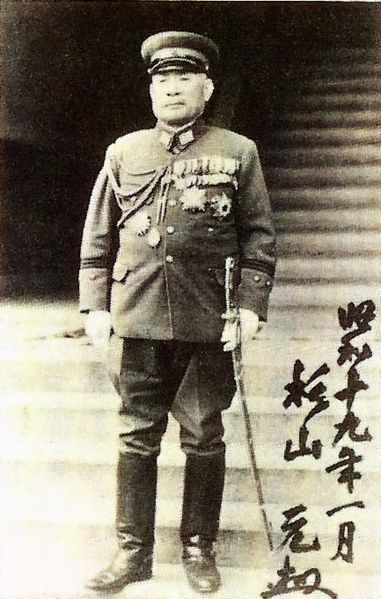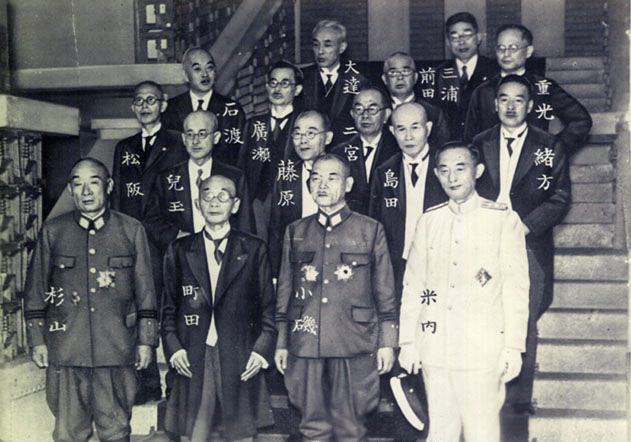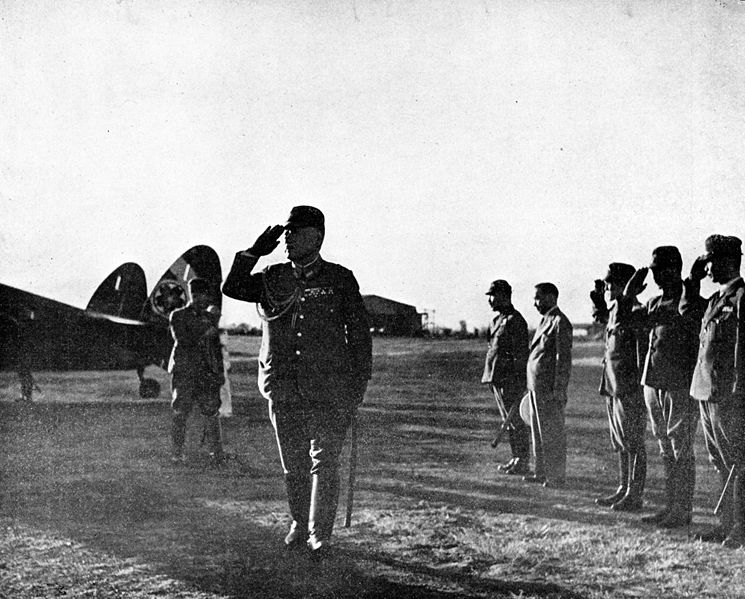<Back to Index>
- Chief of Staff of the Imperial Japanese Army Hajime Sugiyama, 1880
PAGE SPONSOR


Hajime Sugiyama (杉山 元 Sugiyama Hajime / Sugiyama Gen, 1 January 1880 - 12 September 1945) was a field marshal who served as successively as chief of the Army General Staff, and minister of war in the Imperial Japanese Army during World War II between 1937 and 1944. As War Minister in 1937, he was one of the principal architects of the China Incident or second Sino - Japanese War. Later, as Army Chief of Staff in 1940 and 1941, he was a leading advocate of expansion into Southeast Asia and later preventive war against the United States.
Born to a former samurai family from Kokura (now part of Kitakyushu City), Fukuoka Prefecture, Sugiyama was commissioned as a lieutenant in the infantry in 1901 after graduation from the 12th class of the Imperial Japanese Army Academy, and served in the Russo - Japanese War.
After graduating from the 22nd class of the Army Staff College in 1910 and serving on the Imperial Japanese Army General Staff, Sugiyama was posted as military attaché to the Philippines and Singapore in 1912. Promoted to major in 1913, he was posted again as military attaché to British India in 1915. During this time, he also visited Germany, and became acquainted with the use of aircraft in combat in World War I.
On his return, Sugiyama was promoted to lieutenant colonel, and commander of the 2nd Air Battalion in December 1918. He was a strong proponent of military aviation, and after his promotion to colonel in 1921, became the first head of the Imperial Japanese Army Air Service in 1922.
In May 1925, Sugiyama became a major general and acting Vice War Minister in June 1930. In August, he became Vice War Minister and a lieutenant general. He returned to command the expanded Imperial Japanese Army Air Service in March 1933. Sugiyama was promoted to full general in November 1936.
Although never elected to political office, Sugiyama is
regarded as a nationalist
politician. He started in the Toseiha faction, led by
Kazushige Ugaki, with Koiso
Kuniaki, Yoshijirō Umezu, Tetsuzan Nagata and
Hideki Tōjō. They opposed the radical Kodaha faction under
Sadao Araki. Later both factions combined in the Imperial
Way Faction movement, and Sugiyama became one of its
ideological leaders.
Shortly after the February 26 Incident, Sugiyama became Minister of War. Under his tenure, the situation between Japanese forces in Manchukuo and China became more critical, culminating with the Marco Polo Bridge Incident and the invasion of Shanxi Province.
Sugiyama briefly accepted a field command as commanding
general of North China Area
Army and the Mongolia Garrison Army in December
1938.
On his return to Japan, Sugiyama was briefly appointed head of Yasukuni Shrine in 1939. On 3 September 1940, he succeeded elderly Prince Kan'in Kotohito as Chief of the Imperial Japanese Army General Staff. He was one of the leading Army officers lobbying for war with the West. However, on 5 September 1941, on the verge of the war against the United States and Great Britain, he was severely berated by Emperor Hirohito for having earlier predicted in 1937 that Japanese invasion of China would be completed within three months, and challenged over his confidence in a quick victory over the Western powers.
Sugiyama was awarded the honorary rank of field marshal in 1943. As the war fronts collapsed on all sides, Sugiyama was relieved of his post as Chief of the General Staff on 21 February 1944, by General Hideki Tōjō (who continued to serve concurrently as Prime Minister).
Sugiyama was appointed to the Inspector General of Military Training, which was still one of the most prestigious positions in the Army. After Tōjō's ouster in 1944, Sugiyama again became Minister of War. In July 1945, he was asked to take command of the First General Army, which directed defenses of the Japanese mainland against the anticipated Allied invasion.
Ten days after the surrender of Japan, after finishing
preparations for the final dissolution of the Imperial
Japanese Army as dictated by the victorious Allied Powers,
Sugiyama committed suicide by shooting himself four times
in the chest with his revolver while seated at his desk in
his office. At home, his wife also killed herself.
His grave is at the Tama Cemetery, in Fuchū, Tokyo.
